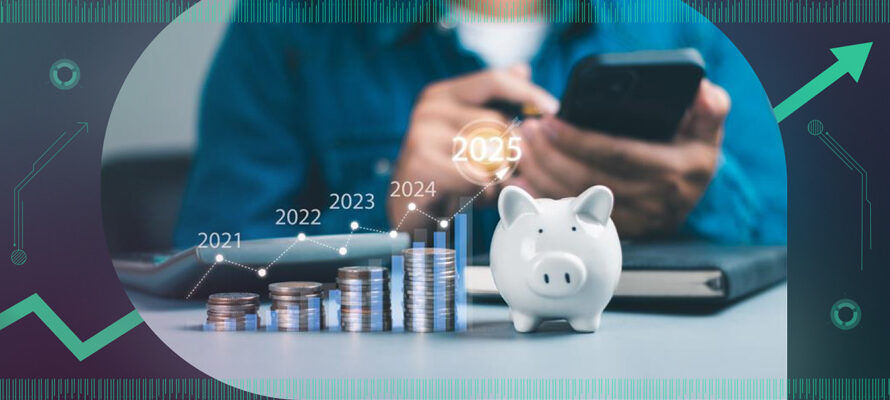Saving money doesn’t have to be difficult. No matter whether you’re saving toward a financial goal or simply want more wiggle room in your budget, small changes can add up to big savings. With the right techniques and a little bit of discipline, you can create better money habits that stick.
The secret saving money tips are not setting yourself up with a complicated budget, or tracking all your expenses down to the last cent; it’s establishing good savings habits that will help you start working away at your large and small financial goals. Whether it’s making smarter purchases or cutting monthly expenses, these 10 life hacks will let you hang on to more cash every month.
Create and Stick to a Realistic Budget
A budget shows exactly where your funds goes each month. Calculate your total income, then list all expenses including rent, utilities, groceries, and entertainment. The 50/30/20 financial rule offers a simple framework: 50% to needs, 30% to wants, and 20% to savings.
Review your budget weekly during the first month, then adjust as needed. A personal budget app can automate tracking and alert you when approaching spending limits.
Track Your Spending Habits
Effective money saving requires being conscious of where your loot truly goes. Keep a record of every purchase for at least four weeks to see what you are spending and where the problems areas are. Actually, there are lots of other things that often get underestimated too — dining out, subscriptions and impulse purchases to name a few.
Log in to mobile banking apps or budgeting tools and automatically categorize transactions. Once you’re aware of these habits, you can put that bucks toward savings or paying down debt.
Separate Needs from Wants
That’s what makes learning to differentiate between essential and discretionary spending so impactful for saving money. The needs such as housing, utilities, groceries, health care, and transportation. Desires include streaming services, restaurant dinners, new clothes and better electronics.
If it’s not something you need, wait 24 hours (or a week in the case of larger purchases) after making decisions to buy anything non-essential. This period of cooling off can often reveal that the desire will in fact pass, and save you from making a regrettable impulse purchase.
Cut Monthly Bills
Your recurring bills offer substantial saving opportunities. Review all subscriptions, insurance policies, and utility bills. Contact service providers to negotiate better rates — many companies offer discounts to retain customers.
For utilities, lower your thermostat by a few degrees, switch to LED bulbs, and unplug unused devices. A bill tracker helps monitor due dates and identify unusual spikes. Consider bundling services for package discounts and review insurance policies annually for competitive rates.
Reduce Food Costs by Planning Ahead
Sock it to inventorying by planning meals, which prevents pricey takeout. Dedicate 30 minutes a week to meal planning based on what you have on hand and making a shopping list. Focus on sales, generic brands and buying proteins in larger quantities when they’re marked down.
If it is the speed you seek, cook enough for a two day supply; freeze part, save the other. Bring your lunch to work, rather than buying in — that alone is worth a $1,000 to $2,000 annual stimulus.
Cancel or Pause Unused Subscriptions
Subscription services quietly drain budgets through recurring charges that accumulate significantly. Review bank statements to identify all subscriptions, then cancel any service you haven’t used in the past month.
A subscription tracker helps monitor renewal dates and prevents unwanted charges. Before subscribing to anything new, ensure the value justifies the cost.
Build an Emergency Fund
An emergency fund prevents you from getting derailed in your saving money endeavors by a nasty surprise expense. Begin by hitting $500 to $1,000 for emergencies, then target three to six months worth of essential living expenses.
Set up automatic $25 to $50 transfers per paycheck into a separate high-yield savings account. Consider this as part of your budget and simply a non-negotiable expense. This pillow lessens economic anxiety and halts credit card dependence.
Pay Off High-Interest Debt First
Credit card debt erodes your capacity to save, since you’re pouring funds into interest payments. If you are carrying balances above 15% interest, you should focus on paying those down before aggressively saving beyond that emergency fund.
Try the debt avalanche method, where you make minimum payments on all debts and target any extra coins to the highest-interest debt. After it’s gone, plow that payment into the next-highest-interest debt for speedier debt freedom.
Shop Smart and Look for Discounts
Compare prices across retailers and search for coupon codes before making purchases. Purchase out of season when stores reduce prices to clear stock. Black Friday brings discounts on electronics, while holiday weekends are a good time to buy appliances.
Embrace secondhand furniture, clothing and household shopping for a fraction of retail price. Sign up for loyalty programs at stores you shop, and compare cash-back credit cards to get percentages back on everyday purchases.
Find Free or Low-Cost Entertainment
Freebies at the community level abound: library programs, and local festivals, hiking trails and free museum days or outdoor concerts. Parks are open free spaces for picnicking and socializing.
Do house parties, not restaurant group dinners. The price of a home-cooked dinner with friends is less than a fraction of restaurant prices. Find discounts at theaters and museums, and think about annual passes to places that you visit often.
October 21, 2025
October 21, 2025



